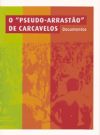“Arrastão” in Carcavelos’ beach: police intervention, media coverage and public responses
Timeline
-
"Arrastão" - Police intervention and media coverage

On the 10th of June, the prime time TV news of the three main terrestrial channels (RTP1, SIC and TVI) opened with the coverage of “a riot” in Carcavelos’ beach, on the outskirts of Lisbon. The beach was full – it was a national holiday marking the Day of Portugal – and the news showed images of black teenagers running and police officers holding guns on the beach. In TV broadcasts, the riot was called an “arrastão”, which literally means dragnet, a...
-
Remembering and understanding the "Arrastão" in Carcavelos

On the 8th of June 206 the High Commissariat for Immigration and Ethnic Minorities (ACIME) organised a seminar on Media and Immigration. During this event a publication, gathering some documents on the Pseudo-“Arrastão” at the Carcavelos beach was presented. It provides two contributions by researchers of the Centre of Social Research and Intervention (CIS/ISCTE) which addresses the social implications of prejudice in media coverage and the nexus between social identity, representat...
-
Dragnet in a shopping mall
In the sequence of media reports on an alleged "arrastão" [dragnet] in the 17th of June, in a shopping mall in the outskirts of Lisbon, involving large groups of young blacks, the Comissão para a Igualdade e Contra a Discriminação Racial (CICDR) [Commission for Equality and Against Racial Discrimination] issued a declaration were it is stated that both the direction of the shopping centre and the public security forces denied the existence of the alleged dragnet. ...
On the 10th of June 2005, the prime time TV news of the three main terrestrial channels (RTP1, SIC and TVI) opened with the coverage of “a riot” in Carcavelos’ beach, on the outskirts of Lisbon. The beach was full – it was a national holiday marking the Day of Portugal – and the news showed images of black teenagers running and police officers holding guns on the beach.
In TV broadcasts, the riot was called an “arrastão”, which literally means dragnet, a Brazilian term used in trying to draw a parallel with the events on the beaches of Rio de Janeiro (Brazil) during the 90’s, where teenagers swept down the beach, scooping up other people’s belongings. Following the comments made by a police officer on the scene, the media described scenes of utter chaos, reporting that around 500 black teenagers had stormed down the beach, attacking and stealing from everyone in their path as panicked citizens scrambled for refuge from the violence.
In the ensuing days, there was a nation-wide public debate which directly linked criminality, in particular gang criminality, and black youngsters descendant of immigrants in Portugal. The Government strengthened security on beaches while opposition asked for harder security measures to be taken.
Despite this climate, one week later, newspaper headlines, quoting a police report, stated that only 30 or 40 individuals participated in illicit acts on the beach and there was no evidence of organised crime. The teenagers seen on the photos were on the run but they were not muggers, it was also added. Only one complaint was presented to the police. In the latest police report (July, the 19th), the incidents were not totally clarified but they were adamant that an “arrastão” had not occurred.
In response to the racist and xenophobic atmosphere, the Alto Comissário para a Imigração e as Minorias Étnicas [High Commissariat for Immigration and Ethnic Minorities] felt the need to point out that “the problem is not the colour of the skin but the social exclusion”. The CICDR - Comissão para a Igualdade e Contra a Discriminação Racial [Commission for Equality and Against Racial Discrimination] made a public statement in response to the “strengthening of the stigmatization of immigrants and ethnic minorities.” Later, the independent journalist Diana Andringa made some research on the events and presented the video “Era uma vez um arrastão” (Once upon a time a dragnet) which shows that no massive and organised action of black teenagers took place in Carcavelos. The video was made with the explicit aim of acting on that precise situation, trying to counteract what was perceived as a growth on a widespread attitude of racism, xenophobia and mistrust towards a particular group, in that case black youths.
On the 8th of June 206 the High Commissariat for Immigration and Ethnic Minorities (ACIME) organised a seminar on Media and Immigration. During this event a publication, gathering some documents on the Pseudo-“Arrastão” at the Carcavelos beach, was publicly presented.
In the sequence of media reports on an alleged "arrastão" in June 2009, in a shopping mall in the outskirts of Lisbon, involving large groups of young blacks, the CICDR issued a declaration were it is stated that both the direction of the shopping centre and the public security forces denied the existence of the alleged dragnet. The CICDR called the attention of the media to avoid repeating what happened in 2005, creating negative and unfair stereotypes and prejudices against minority groups.
Source:
-
SIC Tv, 10.06.2005, http://www.youtube.com/watch?feature=player_detailpage&v=ZjXtTfnaams
-
Jornal Público,10.06.2005, http://www.publico.pt/Local/psp-efectua-varias-detencoes-na-praia-de-carcavelos-1225508
-
Jornal Público,10.06.2005, http://www.publico.pt/Local/numero-de-agentes-da-policia-maritima-reforcado-em-carcavelos_1225514
-
Diário de Notícias, 11.06.2005, http://www.dn.pt/inicio/interior.aspx?content_id=602421
-
Correio da Manhã, 14.06.2005, http://www.cmjornal.xl.pt/noticia.aspx?channelid=00000010-0000-0000-0000-000000000010&contentid=00163379-3333-3333-3333-000000163379&goComments=11
-
Jornal Público,16.06.2005, http://www.publico.pt/Sociedade/arrastao-de-carcavelos-policia-suspeita-de-crime-organizado-mas-nao-tem-provas-1226152
-
Diário de Notícias, 12.07.2005, http://www.dn.pt/inicio/interior.aspx?content_id=616161
-
Jornal Público,19.07.2005, http://www.publico.pt/Sociedade/psp-nega-arrastao-na-praia-de-carcavelos-1228588
-
Correio da Manhã, 19.07.2005, http://www.cmjornal.xl.pt/detalhe/noticias/nacional/portugal/arrastao-deixa-marcas-em-carcavelos
-
Jornal de Notícias, 20.07.2005, http://www.jn.pt/paginainicial/interior.aspx?content_id=504380
-
Jornal Público, 25.11.2005, http://www.publico.pt/Media/arrastao-trabalho-dos-media-revelou-evidente-falta-de-rigor-informativo-isencao-e-objectividade-1240081
-
Diário de Notícias, 10.06.2006, http://www.dn.pt/inicio/interior.aspx?content_id=641805
-
ACIME - High Commissariat for Immigration and Ethnic Minorities http://www.acidi.gov.pt/index.php/noticias/visualizar-noticia/4cdbf76ec5935/institucional_book.pdf
-
CICDR - Commission for Equality and Against Racial Discrimination, http://www.cicdr.pt/images/com_dolce_vita.pdf
